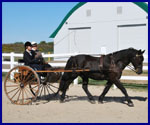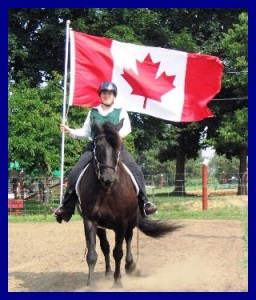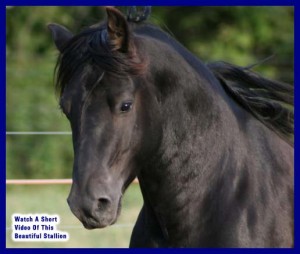Horse Breeds – The Canadian Horse Breed
History of the Canadian Horse
If you are interested in horseback riding and driving consider the ‘all round’ breed of the Canadian Horse. Their history is well documented and the fearless horse was used as an all purpose riding horse and in military installations. Thank you to Hidden Meadow farm for allowing me to use their photos and information directly from their website.
If you have a special breed you would like to see featured, let me know and we will find some information for you!
New Immigrants to Canada
In the mid 1600’s, the “habitants” were finding life in Lower Canada quite different from what they were used to in France. Many of the landowners were nobility and knights accustomed to traveling in fine carriages. But in New France, the few roads were impassable with mud for much of the year and the only transportation was the lowly ox-cart. To ease the unrest, Louis XIV selected horses from his own stables and sent them to Lower Canada between 1665 and 1670. The King of France took great pride in the quality of horses he had in his stables which included Andalusian, Normandy and Brittany bloodlines.

What the Canadian Horse was Used For
Life in Lower Canada was no easier for these horses than it was for the settlers. Not enough hay was cured for all the livestock, so horses were often turned loose to fend for themselves in the bush, only being brought in when needed for work. Over the years, the heavy work and poor conditions, along with the harsh Canadian winters, led to a natural selection in favor of the hardiest animals. The Canadian Horse became smaller and tougher, until they became known as “the little iron horse.”
The Canadian Horse bred in isolation for the next 150 years. Whatever the job was – the Canadians did it. Whether it was supplementing the oxen in front of the plows, moving goods, taking the family to church or racing afterwards, the Canadian Horse performed his duties with eagerness and stamina. Trade between the French settlements in Canada and the English settlements further south were almost non existent during this time because England and France were often at war.
By the 1800’s, the Canadian had a reputation for their pluck and vigor. Large numbers of horses were sent to the United States for use in the Civil War and the Canadian was the preferred horse on many U.S. stage coach lines. Many of these horses were entered into the stud books of the Morgan, Standardbred, American Saddlebred and Tennessee Walkers. The Canadian Horse also served in the Boer War and was shipped to the West Indies to work on the sugar plantations. These drains on the population, along with the importation of other breeds meant that by the second half of the 1800’s, the Canadian Horse was in danger of disappearing.
< alt=”HOrse riding, horse breeds, Laura Kelland-May, Thistle Ridge Skill Builders” width=”604″ height=”286″ />Canadian Horses are very Versitile

A few admirers of the “little iron horse” realized the importance of saving the breed and undertook a campaign to do just that. In 1886, they opened the first stud book for the Canadian Horse. In 1895, the Canadian Horse Breeders Association officially came into being. In 1913 a breeding center was opened on the Federal Experimental Farm at Cap Rouge in Quebec, and later moved to St. Joachim. When the federal government, occupied with the war, closed down the operation in 1940, the Quebec provincial Department of Agriculture reestablished the stud at Deschambault, Quebec. When this operation closed in 1979, the Canadian was once again threatened with extinction.
Thanks to the efforts of a handful of committed breeders, the breed has recovered from a low of 400 registered animals in the 1960’s and 1970’s to a population today of just less than 4000. Once again the Canadian Horses’ strength and versatility has made it popular in both the show ring and back yard.
In April of 2002, the Parliament of Canada passed a bill establishing the Canadian Horse as Canada’s National Horse, recognizing the breed’s fine attributes and contribution to Canadian history. The bill received Royal Assent, officially becoming law, on April 30, 2002.
Breed Specifications
Colour
Most usually black or dark bay. Chestnuts, browns and lighter bays are also found, typically with minimal white markings.Height
The standard is 14 to 16 hands. A sturdy horse with weight proportional to height.Head
Rather short with straight lines, carried high. Ears are set well apart, rather small. The forehead is broad and flat with large eyes set wide apart. The nostrils are very large to allow tremendous air intake and the muzzle is large enough to accommodate the air passage. Cheeks are well developed, firm but not fat.Neck
Fairly arched, medium length, firmly muscled, gracefully attached to head and shoulders.Withers
Lean, clean, slightly raised, long.Shoulders
Long, sloping, well muscled.Back
Strong, well proportioned, broad.Chest
Broad and deep, legs well apart.Quarters
Strong and well muscled. Tail attached rather high, carried well.Legs
Proportionate length, clean cut and elegant yet strong enough to support robust body. Straight, flat bone, large joints, short cannons, strong well defined sloping pasterns, round, sturdy hooves. Legs are sturdy but not coarse, sometimes lightly feathered.Mane/Tail
Both are very long and thick.Movement
Free and vigorous movement, harmonious. Flexible, agile and sure footed. Good natural balance.Temperament
Energetic and spirited without nervousness, calm, docile. Kind and very intelligent.

 Try these three powerful exercises to get strengthen your position.
Try these three powerful exercises to get strengthen your position.
